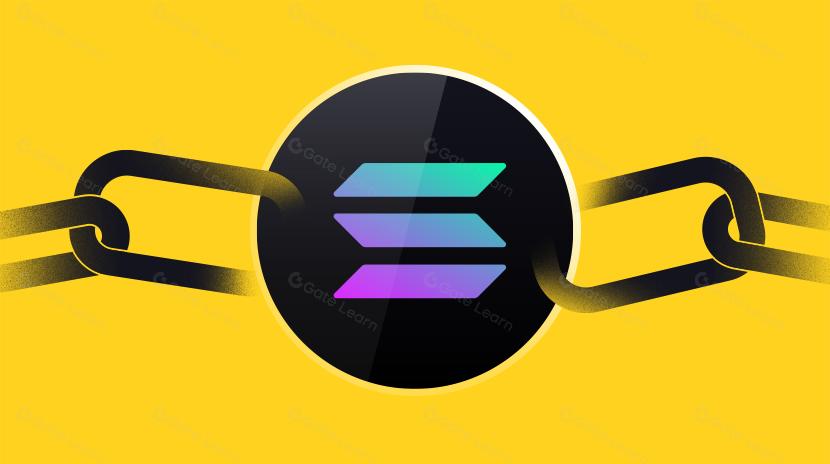The debate over single-use blockchains: Is Tempo a true blockchain?
Editor’s Note: On October 18, 2025 (UTC), Fortune reported that Tempo—a payment-focused blockchain project developed by Stripe and crypto venture capital firm Paradigm—closed a $500 million Series A funding round. The round was led by venture capital giants Greenoaks and Joshua Kushner’s Thrive Capital, valuing Tempo at $5 billion. Sources indicate that Sequoia Capital, Ribbit Capital, and Ron Conway’s SV Angel also participated. Neither Paradigm nor Stripe took part in this round.
“No one goes out to buy a Swiss Army knife intentionally; it’s usually something you get as a Christmas present.” — Jensen Huang
Great companies start out more like a scalpel than a Swiss Army knife. When a business zeroes in on a single area, it’s easier to achieve exceptional results—and customers remember its core value.
Take internet companies in 1999: Yahoo’s homepage packed in search, auctions, news, email, and instant messaging, but none stood out. Google’s homepage, laser-focused solely on search, made its purpose instantly obvious and helped Google dominate the search market. Today, “Google” is synonymous with “search,” while Yahoo is relegated to niche features like fantasy baseball leagues—proof that mastering one thing beats mediocrity at many.
Does this principle hold true for blockchain?
Current Landscape: Two Blockchain Models Developing in Parallel
Bitcoin is a blockchain dedicated to one purpose: transferring Bitcoin. Its simplicity is arguably the reason for its remarkable success.
Ethereum and Solana, however, are general-purpose blockchains that have also achieved notable success.
What’s more, these models don’t seem to cannibalize each other: Bitcoin still hasn’t made headway in DeFi, and Ethereum has never become a mainstream currency.
So, can these two models coexist?
It’s still too soon to say—especially as general-purpose blockchains are about to face a new, specialized competitor.
New Variable: Tempo
Last week, Stripe and Paradigm announced they’re developing Tempo, a blockchain focused on stablecoin payments. As soon as it was unveiled, industry insiders called it a “potential winner in crypto payments,” citing several core advantages that target pain points of general-purpose blockchains:
- Predictable fees: Transactions settle in stablecoins—no need to hold native tokens
- Fast confirmation: Achieves near-instant transaction finality
- Privacy and compliance: Offers optional privacy and compliance features
- Dedicated payment channels: Segregates payment traffic to avoid congestion from other use cases
- High throughput: Purpose-built for payments—much more efficient than general-purpose chains
Matt Huang, leading Tempo’s development, explained: “Focusing on a single domain lets us iterate faster. We need to meet emerging market demand and reduce reliance on ecosystems like Ethereum L1.”
This indirect challenge to Ethereum has sparked speculation that Tempo’s ambitions may reach beyond payments.
Notably, Huang added: “Tempo will launch with permissioned validator nodes, but it will support permissionless participation from day one and will gradually move toward decentralization.”
A blockchain that’s both decentralized and payment-specialized sounds a lot like an “ideal general-purpose blockchain.” Will Tempo become the all-in-one challenger to Ethereum and Solana?
Debate: The Single-Use Chain “Expansion Paradox”
Business history is full of successes that started narrow and expanded: Microsoft began with BASIC, then branched into operating systems, office software, and cloud; Amazon started as an online bookstore and grew into a retail giant; Apple started with personal computers and now offers an ecosystem spanning phones, computers, and wearables. If Tempo can first dominate payments, it may follow a similar path—eventually becoming a more comprehensive blockchain than Ethereum.
But there are clear counterexamples: dedicated calculators once outperformed general-purpose computers for fast calculations, but few people purchase calculators today. More people have a Swiss Army knife in their drawer than a Texas Instruments calculator. As general-purpose technologies advance, single-purpose tools may become obsolete. Will general-purpose blockchains eventually make “payment-only chains” irrelevant?
Industry opinions are sharply divided:
Max Resnick is bullish on general-purpose blockchains: “Decentralized blockchains will ultimately surpass centralized systems—including single-use chains—in speed, scale, reliability, and even compliance.”
Mert Mumtaz, on the other hand, questions Tempo’s legitimacy: “It’s not even a blockchain, let alone a general-purpose blockchain—who builds a blockchain just for payments?” He argues that decentralization is the heart of blockchain, and truly decentralized chains must be general-purpose. If Tempo pursues decentralization, it may attract projects of questionable value, potentially causing congestion and impacting payment performance.
Mumtaz further says “payment-only chains” have two possible models: either like Bitcoin (non-Turing complete—only transfers, no complex code), or permissioned (nodes controlled by centralized entities). If that’s the case, Ethereum and Solana won’t be threatened by Tempo—Tempo would be either too limited, or not decentralized enough.
The core issue is: If Tempo can deliver faster, cheaper payment services without full decentralization and become the main network for stablecoin circulation, will users care whether it’s a “real blockchain”?
Conclusion: A Test of Decentralization’s Value
Rather than a contest between single-use and general-purpose chains, this is really a test of what users value in decentralization: How much are people willing to pay for decentralization? Will they accept slower speeds and higher fees for decentralized guarantees, or will they prefer efficiency and lower costs, even if it means sacrificing decentralization?
Tempo may serve as the key test for this question.
Statement:
- This article is reprinted from [Foresight News], with copyright held by the original author [Byron Gilliam]. If you have concerns about this reprint, please contact the Gate Learn team for prompt resolution following established procedures.
- Disclaimer: The views and opinions expressed in this article are solely those of the author and do not constitute investment advice.
- Other language versions are translated by the Gate Learn team. Do not copy, distribute, or plagiarize these translations without proper citation of Gate.
Related Articles

The Future of Cross-Chain Bridges: Full-Chain Interoperability Becomes Inevitable, Liquidity Bridges Will Decline

Solana Need L2s And Appchains?

Sui: How are users leveraging its speed, security, & scalability?

Navigating the Zero Knowledge Landscape

What is Tronscan and How Can You Use it in 2025?
